ENG_670263.XML
 G_IC01_XX_00896
G_IC01_XX_00896
Video: Soft starter teaser
SIRIUS 3RW soft starters - as versatile as your application

G_IC01_XX_00698
SIRIUS 3RW soft starters
● Recommended soft starter
❑ Possible soft starter
1) The mass inertia of the fan is <10 times the mass inertia of the motor.
2) The mass inertia of the fan is ≥10 times the mass inertia of the motor.
|
|

G_IC03_XX_24211G_IC03_XX_24211 |
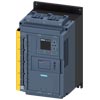
G_IC03_XX_27593 |
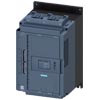
|
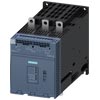
|
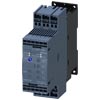
|
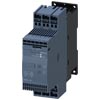
|
|
Applications
|
|
High Performance
|
General Performance
|
Basic Performance
|
|
SIRIUS soft starters
|
|
3RW55
|
3RW55-F
|
3RW52
|
3RW50
|
3RW40
|
3RW30
|
|
General technical specifications
|
|
Operational current at 40 °C
|
A
|
13 ... 2 217
|
13 ... 987
|
13 ... 987
|
143 ... 570
|
12.5 ... 106
|
3 ... 106
|
|
Operational voltage
|
V
|
200 ... 6901)
|
200 ... 480
|
200 ... 600
|
200 ... 600
|
200 ... 600
|
200 ... 480
|
|
Operating power for three-phase motors
|
|
|
|
|
|
|
- Standard (inline) circuit
|
kW
|
5.5 ... 710
|
5.5 ... 315
|
5.5 ... 315
|
75 ... 315
|
5.5 ... 55
|
1 ... 55
|
|
|
kW
|
11 ... 1 200
|
11 ... 560
|
11 ... 560
|
--
|
--
|
--
|
|
|
|
|
- Standard (inline) circuit
|
hp
|
7.5 ... 1 000
|
7.5 ... 400
|
7.5 ... 400
|
100 ... 400
|
7.5 ... 75
|
1.5 ... 75
|
|
|
hp
|
10 ... 1 700
|
10 ... 750
|
10 ... 750
|
--
|
--
|
--
|
|
Ambient temperature2)
|
°C
|
-25 ... +60
|
-25 ... +60
|
-25 ... +60
|
-25 ... +60
|
-25 ... +60
|
-25 ... +60
|
|
Soft starting/ramp-down
|
|
✓
|
✓
|
✓
|
✓
|
✓
|
✓3)
|
|
Voltage ramp
|
|
✓
|
✓
|
✓
|
✓
|
✓
|
✓
|
|
Starting voltage
|
%
|
20 ... 100
|
20 ... 100
|
30 ... 100
|
30 ... 100
|
40 ... 100
|
40 ... 100
|
|
Ramp-up and ramp-down time
|
s
|
0 ... 360
|
0 ... 360
|
0 ... 20
|
0 ... 20
|
0 ... 20
|
0 ... 203)
|
|
Pump stop (torque control)4)
|
|
✓
|
✓
|
--
|
--
|
--
|
--
|
|
|
%
|
10 ... 100
|
10 ... 100
|
--
|
--
|
--
|
--
|
|
|
%
|
20 ... 200
|
20 ... 200
|
--
|
--
|
--
|
--
|
|
Soft Torque (torque limit)
|
|
--
|
--
|
✓
|
✓
|
--
|
--
|
|
Integral bypass contact system
|
|
✓
|
✓
|
✓
|
✓
|
✓
|
✓
|
|
Intrinsic device protection
|
|
✓
|
✓
|
✓
|
✓
|
✓
|
--
|
|
Motor overload protection
|
|
✓5)
|
✓5)
|
✓
|
✓5)
|
✓5)
|
--
|
|
Thermistor motor protection evaluation
|
|
✓
|
✓
|
✓6)
|
✓6)
|
✓6)
|
--
|
|
Analog output
|
|
✓
|
✓
|
✓6)
|
✓6)
|
--
|
--
|
|
Remote RESET
|
|
✓
|
✓
|
✓
|
✓
|
✓
|
--
|
|
Adjustable current limiting
|
|
✓
|
✓
|
✓
|
✓
|
✓
|
--
|
|
Inside-delta circuit1)
|
|
✓
|
✓
|
✓
|
--
|
--
|
--
|
|
Breakaway pulse
|
|
✓
|
✓
|
--
|
--
|
--
|
--
|
|
Automatic parameterization
|
|
✓
|
✓
|
--
|
--
|
--
|
--
|
|
Pump cleaning
|
|
✓
|
✓
|
--
|
--
|
--
|
--
|
|
Condition monitoring
|
|
✓
|
✓
|
--
|
--
|
--
|
--
|
|
User account administration7)
|
|
✓
|
✓
|
--
|
--
|
--
|
--
|
|
Creep speed in both directions of rotation
|
|
✓
|
--
|
--
|
--
|
--
|
--
|
|
Reversing operation
|
|
✓
|
✓
|
--
|
--
|
--
|
--
|
|
Reversing DC braking4)8)
|
|
✓
|
--
|
--
|
--
|
--
|
--
|
|
DC braking4)8)
|
|
✓
|
--
|
--
|
--
|
--
|
--
|
|
Dynamic DC braking4)8)
|
|
✓
|
--
|
--
|
--
|
--
|
--
|
|
Motor heating
|
|
✓
|
--
|
--
|
--
|
--
|
--
|
|
Communication function9)
|
|
✓
|
✓
|
✓
|
✓
|
--
|
--
|
|
HMI module installable in the control cabinet door
|
|
✓
|
✓
|
✓9)
|
✓9)
|
--
|
--
|
|
Operating measured value display
|
|
✓
|
✓
|
✓9)
|
✓9)
|
--
|
--
|
|
Logbooks
|
|
✓
|
✓
|
✓9)
|
✓9)
|
--
|
--
|
|
Statistical data and min/max pointer function
|
|
✓
|
✓
|
✓9)
|
✓9)
|
--
|
--
|
|
Trace function7)
|
|
✓
|
✓
|
--
|
--
|
--
|
--
|
|
Programmable control inputs and outputs
|
|
✓
|
✓
|
--
|
--
|
--
|
--
|
|
Number of parameter sets
|
|
3
|
3
|
1
|
1
|
1
|
1
|
|
Configurable via software7)
|
|
✓
|
✓
|
--
|
--
|
--
|
--
|
|
Number of controlled phases
|
|
3
|
3
|
3
|
2
|
2
|
2
|
|
Heavy starting CLASS 304)
|
|
✓
|
✓
|
--
|
--
|
--
|
--
|
✓ Function available
-- Function not available
1) Inside-delta circuit only up to operational voltage 600 V.
2) Take derating into account for temperatures above 40 °C.
3) Only soft starting for 3RW30.
4) Calculate soft starter and motor with size allowance where required.
5) When using the motor overload protection according to ATEX/IECEx, an upstream contactor may be required, see ATEX/IECEX certified motor overload protection → Line contactor or additional undervoltage release on the motor starter protector.
6) Special device versions only.
7) With software Soft Starter ES (TIA Portal).
8) Not possible in inside-delta circuit.
9) Only in conjunction with special accessories.
Constraints
The 3RW soft starters should always be designed on the basis of the required rated operational current of the motor. The motor ratings listed in the selection and ordering data are rough guide values and designed for basic starting conditions (CLASS 10). For other starting conditions, we recommend the Simulation Tool for Soft Starters (STS).
Motor rating data in kW and hp is based on IEC 60947‑4‑1.
At an installation altitude above 2 000 m, max. permissible operational voltage is reduced to 480 V.

G_NSB0_XX_01704
Installation altitude for SIRIUS 3RW soft starters
The selection and ordering data were determined for the following constraints (stand-alone installation without auxiliary fan)
|
|

|

G_IC03_XX_27589 |

|

|

|

|
|
Applications
|
High Performance
|
General Performance
|
Basic Performance
|
|
SIRIUS soft starters
|
3RW55/3RW55‑F
|
3RW52
|
3RW50
|
3RW40
|
3RW30
|
|
Constraints
|
|
Maximum starting time
|
s
|
20
|
10
|
3
|
|
Maximum starting current in % of motor current
|
I
e
|
300
|
|
Maximum number of starts per hour
|
1/h
|
5
|
20
|
Simulation Tool for Soft Starters (STS)

S_IC01_XX_00175
Easy input of motor and load data
The Simulation Tool for Soft Starters (STS) provides a convenient means of designing soft starters using a simple, quick and user-friendly operator interface. Entering the motor and load data will simulate the application and prompt suggestions for suitable soft starters.
- Simple, quick and user-friendly interface
- Detailed and up-to-date Siemens motor database, including IE3 and IE4 motors
- Simulation of heavy starting up to CLASS 30
- Update-capable (e.g. motors, load types, functions)
- Fast simulations with minimum input data
- Immediate, graphical curve charts of start operations with limit values
- View in table form of suitable soft starters for the application
The Simulation Tool for Soft Starters (STS) is available as a free download for Windows and as an app (for Android and iOS).
For more information, see also here.
SIRIUS Soft Starters ES (TIA Portal)

S_IC01_XX_00148
Easy and clearly arranged parameter setting of the SIRIUS 3RW55 soft starter with SIRIUS Soft Starter ES (TIA Portal)
The SIRIUS Soft Starter ES (TIA Portal) software permits quick and easy parameterization, monitoring and diagnostics of SIRIUS 3RW5 soft starters for service purposes.
- Transparent setting of the device functions and their parameters – online and offline
- Effective diagnostics functions on the soft starter and display of the most important measured values
- Trace function (oscilloscope function) for recording measured values and events (only in the Professional software version)
- Time savings thanks to shorter commissioning times
- Fast, low-cost licensing using a simple licensing procedure (available online too)
SIRIUS 3RW soft starter block library for SIMATIC PCS 7

S_IC01_XX_00134
Faceplate of the motor block
The SIRIUS 3RW soft starter PCS 7 block library can be used for simple and convenient integration of SIRIUS 3RW52 and 3RW55 soft starters into the SIMATIC PCS 7 process control system.
The SIRIUS 3RW soft starter block library for PCS 7 contains the diagnostics and driver blocks that correspond to the SIMATIC PCS 7 diagnostics and driver concept as well as the elements (symbols and faceplates) required for operator control and process monitoring.
SIRIUS Sim

S_IC01_XX_00180
SIRIUS Sim 3RW55
The SIRIUS simulation tool can be used to quickly and easily test functions and configurations in an office environment. These configurations can then be loaded directly into real devices.
SIRIUS Sim integrates the SIRIUS 3RW55 and SIRIUS 3RW55 Failsafe soft starters with the following features:
- Complete parameterization of the SIRIUS 3RW55 High Performance and SIRIUS 3RW55 Failsafe soft starters
- Complete navigation with the same menu structure as on the HMI
- Optional storage of the parameterization on a micro SD memory card for transfer to the real soft starter
- Simulation of startup and shutdown, including operating phases
- Simulation of different fault states
SIRIUS Sim is available as a free download.
For more information, see also here.
SIRIUS 3RW55 and 3RW55 Failsafe system redundancy S2 with PROFINET High Feature communications module

G_IC03_XX_27139
PROFINET High Feature communications module 3RW5950-0CH00
The PROFINET High Feature communications module for SIRIUS 3RW55 and SIRIUS 3RW55 Failsafe soft starters supports the S2 system redundancy mechanisms of PROFINET IO from firmware version 3.0 and therefore can be operated directly on fault-tolerant systems such as SIMATIC S7‑400H or S7‑1500H. As such, 3RW55 and 3RW55 Failsafe soft starters can provide decisive added value also for the field level of plants in which plant availability and control system redundancy are priorities.
Circuit concept
3-phase controlled SIRIUS 3RW soft starters can be operated in two different types of circuit:
- Standard (inline) circuit
The controls for isolating and protecting the motor are simply connected in series with the soft starter. The motor is connected to the soft starter with three cables.
- Inside-delta circuit
The wiring is similar to that of star-delta (wye-delta) starters. The phases of the soft starter are connected in series with the individual motor windings. The soft starter then only has to carry the phase current, amounting to about 58% of the rated motor current (conductor current).
Comparison of the types of circuit

G_NSB0_XX_00424
Standard (inline) circuit: Rated current Ie corresponds to the rated motor current In, three cables to the motor

G_NSB0_XX_00425
Inside-delta circuit: Rated current Ie corresponds to approx. 58% of the rated motor current In, six cables to the motor (as for star-delta (wye-delta) starters)
Which circuit?
Using the standard (inline) circuit involves the lowest wiring outlay. If the soft starter to motor connections are long, this circuit is preferable.
The wiring complexity is twice as high when using the inside-delta circuit, but a smaller device can be used with the same rating. Thanks to the choice of operating mode between the standard (inline) circuit and inside-delta circuit, it is always possible to select the most favorable solution.
The braking function is possible only in the standard (inline) circuit. The inside-delta circuit cannot be used in 690 V line supplies.
Configuration
The solid-state 3RW soft starters are designed for normal starting. In case of heavy starting or increased starting frequency, a larger unit must be selected. The 3RW50 and 3RW52 soft starters may be used in isolated supply networks (IT systems) up to 600 V AC and the 3RW55 soft starters even up to 690 V.
For long starting times it is recommended to have a PTC thermistor or temperature switch in the motor. This also applies for the ramp-down modes torque control, pump stop and DC braking, because during the ramp-down time in these modes, an additional current loading applies in contrast to free ramp-down.
No capacitive elements are permitted in the motor feeder between the SIRIUS 3RW soft starter and the motor (e.g. no reactive power compensation equipment). In addition, neither static systems for reactive power compensation nor dynamic PFC (Power Factor Correction) must be operated in parallel during starting and stopping of the soft starter. This is important to prevent faults arising on the compensation equipment and/or the soft starter.
All elements of the main circuit (such as fuses and switching devices) should be dimensioned for direct-on-line starting, following the local short-circuit conditions. Fuses and switching devices must be ordered separately. The harmonic component load of the starting current must be taken into consideration for the selection of motor starter protectors/circuit breakers (selection of release). Please observe the maximum switching frequencies specified in the technical specifications.
Notes:
When three-phase motors are switched on, voltage drops occur as a rule on starters of all types (direct-on-line starters, star-delta (wye-delta) starters, soft starters). The infeed transformer must always be dimensioned such that the voltage dip when starting the motor remains within the permissible tolerance. If the infeed transformer is dimensioned with only a small margin, it is best for the control voltage to be supplied from a separate circuit (independently of the main voltage) in order to avoid the potential switching off of the soft starter.
For dimensioning soft starters, we recommend our Simulation Tool for Soft Starters (STS), see https://support.industry.siemens.com/cs/ww/en/view/101494917
or our Technical Support, www.siemens.com/support-request
Recommended parameters for the initial commissioning of our SIRIUS 3RW soft starters are listed in every report of our Simulation Tool for Soft Starters (STS). In addition, our High Performance soft starters provide support by means of their commissioning wizards.
Motor feeders with soft starters
The type of coordination according to which the motor feeder with soft starter is mounted depends on the application-specific requirements. Normally, fuseless mounting (combination of motor starter protector/circuit breaker and soft starter) is sufficient. If type of coordination "2" is to be fulfilled, then semiconductor fuses must be fitted in the motor feeder.
Type of coordination "1" according to IEC 60947-4-1:
After a short-circuit incident, the unit is defective and therefore unsuitable for further use (protection of persons and system guaranteed).
Type of coordination "2" according to IEC 60947-4-1: After a short-circuit incident the unit is suitable for further use (protection of persons and system guaranteed).
The type of coordination refers to soft starters in combination with the stipulated protective device (motor starter protector/circuit breaker, fuse), not to any additional components in the feeder.
The types of coordination are indicated in the corresponding tables by the symbols shown on orange backgrounds.
Feeder tests and results
To keep the scope of feeder tests with SIRIUS 3RW soft starters within economically reasonable limits, tests were conducted with feeder components (motor starter protectors/circuit breakers, fuses) that cover the greatest number of use cases (different soft starter versions depending on, for example, line voltage, type of circuit, or necessary overdimensioning). For the combined tests that were conducted, the values for the short-circuit breaking capacity Iq in kA were determined and documented.
If the short-circuit breaking capacity is the same, of course, smaller motor starter protectors/circuit breakers or fuses can also be used for the selected soft starter provided the dimensioning of the short-circuit components is suitable for the connected three-phase motor and the line protection for the cables used. For type of coordination "2" (with semiconductor protection), it is also necessary to compare the characteristics because the protection function would no longer be completely ensured if too small a fuse were selected. If the soft starter does not have a motor protection function, the motor protection must also be dimensioned appropriately.
Setting the motor current
If circuit breakers with an overload release are used (e.g. SIRIUS 3RV20 motor starter protector), we recommend activating the motor protection function of the SIRIUS 3RW soft starter to protect the motor and setting the soft starter to the rated operational current Ie of the motor. We recommend setting the motor starter protector/circuit breaker in such a way that it provides line protection but does not usually trip before the soft starter when a motor overload occurs.
Line protection and motor protection
Line protection and motor protection are not ensured in all operating cases, depending on:
- How the motor feeder is constructed (e.g. with fuses or motor starter protectors)
- Whether the SIRIUS 3RW soft starters are operated within the specification relevant for the tests (IEC 60947‑4‑2)
- Or whether the documented constraints (see text at the start of this topic) have been observed
There are operating states of the thyristors (caused, for example, by high starting frequencies or heavy starting) that do not permit an overload to be disconnected by the SIRIUS 3RW soft starter. These cases are very rare but can not be ruled out in all cases.
In accordance with IEC 60947‑4‑2, SIRIUS 3RW soft starters are dimensioned and checked for operation with up to 8 times the rated operational current Ie. For currents larger than this, reliable disconnection of an overcurrent by the SIRIUS 3RW soft starter is not ensured. Such large overcurrents have to be disconnected by a switching device at a higher level (e.g. by a circuit breaker or a fuse in conjunction with an optional line contactor).
Motor protection by the SIRIUS 3RW soft starter is ensured for currents up to 8 times the rated operational current Ie in any case. Line protection is covered by the line-side circuit breaker or fuse. These motor feeder components must be dimensioned accordingly and the cable cross-sections must be chosen to match.
Line protection
Line protection in motor feeders with soft starters is always covered by a fuse or a circuit breaker both in case of an overload and in case of a short circuit. The motor starter protector/circuit breaker must have an overload release. That is the case for motor starter protectors (e.g. SIRIUS 3RV20).
Circuit breakers without an overload release (e.g. SIRIUS 3RV23 motor starter protectors) must not be used because they do not provide overload protection. The feeder tests for these were therefore not performed. If the motor feeder with SIRIUS 3RW soft starters is configured without a fuse, motor starter protectors must be used that ensure tripping on an overload in all cases.
Motor protection
If fuses are used to provide protection against overload and short circuit of the cables, the motor is protected by the SIRIUS 3RW soft starter. If the constraints (simple starting conditions CLASS 10, listed maximum values for starting current, starting time and number of starts per hour) are observed, the motor feeders can be configured according to IEC as described in the section about soft starters (an optional line contactor is not required). If these preconditions are met, the SIRIUS 3RW soft starters are able to trip on overloads to protect the motor in any case.
In other starting conditions and on heavy starting, the following must be considered:
Trip classes
Tested fuseless switchgear assemblies comprising SIRIUS 3RW soft starters and motor starter protectors only comply with CLASS 10.
To configure tested motor feeders, for example, for CLASS 20 or CLASS 30, fuses must be used together with SIRIUS 3RW soft starters.
Line contactor
In applications with high starting frequencies or heavy starting as of CLASS 20, we recommend combining fuses with the use of a line contactor on the line side so that a motor overload is disconnected by the fault signaling contact of the soft starter in any case (that is, even in rare cases in which disconnection by the SIRIUS 3RW soft starter is no longer possible due to the operating state of the thyristors).
ATEX/IECEx-certified motor overload protection
Ambient temperature during operation
The SIRIUS 3RW soft starters are approved for operation in a temperature range of -25 to +60 °C.
Please take into account derating of the rated operational current for ambient temperatures above 40 °C.
For more information, see the Equipment Manual and the technical product data sheet of the selected soft starter.
Trip class (electronic overload protection)
The motor and cables must be dimensioned for the selected trip class.
The rated data of the soft starters refer to normal starting (CLASS 10). For heavy starting (> CLASS 10), the soft starter may need to be overdimensioned, as a rated motor current that is lower than the soft starter rated current must be set.
Short-circuit protection
The SIRIUS 3RW soft starter does not have short-circuit protection. Short-circuit protection must be ensured.
Line protection
Avoid impermissibly high cable surface temperatures by correctly dimensioning the cross-sections.
The cable cross-section must be adequately dimensioned.
Line contactor or additional undervoltage release on the motor starter protector
In many ATEX/IECEx applications no additional measures (e.g. the use of a line contactor) are necessary with regard to the motor feeder configuration.
The operation of the selected soft starter may, depending on the amplitude of the line voltage and the type of motor connection (standard (inline) circuit or inside-delta circuit), result in the loss of the certified motor overload protection according to ATEX/IECEx if one of the two remedial measures listed below is not implemented.
Remedial measures:
- An additional line contactor in the main circuit
- An additional undervoltage release for a motor feeder configuration with a motor starter protector/circuit breaker
The line contactor or the undervoltage release are connected to error outputs 95, 96 and 98 of the selected soft starter.
Note:
For ATEX/IECEx applications, the accompanying information on parameterization and commissioning must be observed in the ATEX/IECEx chapters of the Equipment Manual for the selected soft starter.
Article number scheme
|
Product versions
|
Article number
|
|
|
Device type
|
High Performance soft starters
|
3RW55
|
❒
|
❒
|
–
|
❒
|
❒
|
❒
|
❒
|
❒
|
|
|
General Performance soft starters
|
3RW52
|
❒
|
❒
|
–
|
❒
|
❒
|
❒
|
❒
|
❒
|
|
|
Basic Performance soft starters
|
3RW50
|
❒
|
❒
|
–
|
❒
|
❒
|
❒
|
❒
|
❒
|
|
|
3RW40
|
❒
|
❒
|
–
|
❒
|
❒
|
❒
|
❒
|
❒
|
|
|
3RW30
|
❒
|
❒
|
–
|
❒
|
❒
|
❒
|
❒
|
❒
|
|
|
Size/rated operational current Ie
|
e.g. 15 = 25 A in size S1
|
|
❒
|
❒
|
|
|
|
|
|
|
|
|
Connection type
|
e.g. 1 = screw terminals
|
|
|
|
|
❒
|
|
|
|
|
|
|
Soft starter functionality
|
e.g. AC = with bypass and analog output,
3-phase controlled
|
|
|
|
|
|
❒
|
❒
|
|
|
|
|
Rated control supply voltage Us
|
e.g. 0 = 24 V AC/DC
|
|
|
|
|
|
|
|
❒
|
|
|
|
Rated operational voltage Ue
|
e.g. 4 = 200 ... 480 V AC
|
|
|
|
|
|
|
|
|
❒
|
|
|
Example
|
|
3RW52
|
1
|
5
|
–
|
1
|
A
|
C
|
0
|
4
|
|
Note:
The article number scheme shows an overview of product versions for better understanding of the logic behind the article numbers.
For your orders, please use the article numbers quoted in the selection and ordering data.